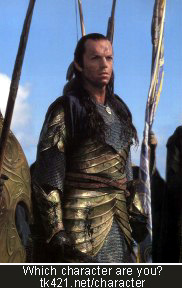Israeli Electoral Guide for the Perplexed
Guide to the Perplexed is the 12th century apologetic written by Rabbi Moses ben Maimon (also known as "Maimonedes" or the "RamBam") in an effort to persuade assimilated Jews exposed to the Aristotelian-Islamic-Christian science and philosophy of the day of the truth of Torah Judaism. The RamBam was himself a scientist, philosopher and physician in Spain, North Africa and Egypt (his most famous patient having been Salachdin), very much schooled in what Jews of the day called "Greek science," and he sought to convince his readers that the modern science of the 12th century presented no conflict with the Torah. The science may have changed, but the conflict prevails, and many rabbis and scholars still produce works that try to accomplish the RamBam's objective.
Many people find the Israeli electoral system, with its diversity of political parties, as perplexing as the efforts by assimilated, educated Spanish Jews of the 12th century to reconcile Aristotle with Torah Judaism. To assist them in coping with the upcoming Israeli Knesset elections, Ben Sales at JTA has written a short electoral Guide to the Perplexed. It admirably allocates the major players among the 34 parties participating in the elections among 5 blocks: right, center, left, Haredi Orthodox and Arab parties.
(Of course such divisions are generalities and break down when applied to individual voters. There are Arabs who vote for, and are candidates for the Knesset on the lists of non-Arab parties. Some Haredi Orthodox vote for the secular parties, and many Sefardic Jews who are not Haredi nonetheless vote for the Haredi Orthodox party called Shas, out of ethnic solidarity.)
Mr. Sales also acquaints the reader with some leading politicians from each camp. All in all, it is a job well done.
However, I can do better. Here is all that one needs to know about the Israeli elections:
1. Israel has a parliamentary system, and all Knesset members run at large, not to represent a particular district. Therefore each voter casts a ballot for a party, not a candidate.
2. As far as I know, no party has ever won a majority of the seats in the Knesset (61). Therefore, following the election, the President of Israel (who is now Shimon Peres) offers the first opportunity to form a government to the leader of the party who, in the President's opinion, has the best chance of forming a ruling coalition. The party leader designated by the President may or may not be the leader of the party that has won the most seats in the Knesset (which gives the center left an edge, since President Peres, a left-winger, could give, say, Shelly Yachimovich of Labor, the first chance to form a government even if Bibi Netanyahu's Likud-Beitenu list wins the most Knesset seats).
3. Once the President has authorized a party leader to try to form a government, the real fun begins. The chosen party leader is given a set period of time to form a government. If he is successful in putting together a coalition agreement within that time frame, Israel has a government. If not, the President can give him an extension or turn to another party leader. This post-election process can last for weeks or months and the bargaining process is not pretty. Small parties with only a few seats in the Knesset can demand all sorts of legistlation, perks and offices in return for joining, or at least not actively opposing, a government in formation.
4. But here is the bottom line: At the end of the day, when the cigar smoke clears from those smoke-filled rooms, Benjamin Netanyahu will still be Prime Minister, at the head of a right-center coalition.
Happy Elections, people of Israel. Democracy in Israel may not be pretty, but it sure beats anything any of your neighbors have produced.






0 Comments:
Post a Comment
<< Home